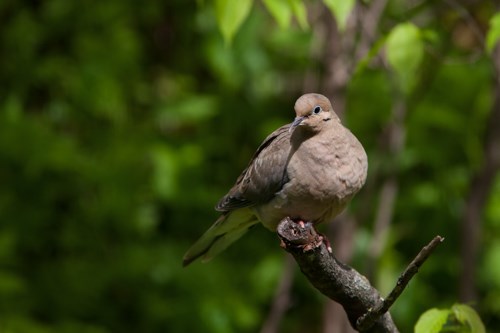
NPS/Gordon Dietzman IntroductionThe status of the mourning dove is controversial. In some states it is hunted as a fast, acrobatic, and challenging game bird; in other states it is protected as a songbird. Despite 10s of millions being taken each year by hunters, the population has remained relatively stable, probably due to the bird's high reproductive capacity. Many pairs will nest four or five times each summer and produce from 1-4 eggs each nesting. Nests are constructed by the female using twigs brought to her by the male and are simple platforms on which the eggs are incubated and young are protected. The young are initially fed “pigeon” milk, a rich broth of cells sloughed off the inside of the adult’s crop that is particularly rich in proteins, fats, and water. After 5-11 days, the chicks are weaned off this diet and onto a regurgitated mix of fruits and seeds. A few days later the young leave the nest, although they usually remain in the area, freeing the adults to begin a new family. Doves eat primarily hard, dry foods and therefore need to consume significantly larger quantities of water than many other birds. But birds are typically more vulnerable to predators when drinking water. To drink water most birds take a sip and then tip their heads upwards to drink. Doves actually immerse their bills and suck water. This method of drinking is much faster and reduces the amount of time doves are vulnerable to predators. Fascinating Facts
Identification
| |
Last updated: March 29, 2022
